
ナンシー・ゴンザレス
Nancie L. Gonzalez, 1929-2020

Nancie
Loudon Gonzalez (1929-2020)
☆ ナンシー・ロンドン・ゴンザレス(Nancie Loudon Gonzalez, 1929-2020)は、アメリカの人類学者。『誇り高き遺産:ニューメキシコのスペイン系アメリカ人』、『黒人カリブ人の家庭構造: 移民と近代化に関する研究』、『ドル、ハト、そしてワシ:ホンジュラスへのパレスチナ人の100年にわたる移住』などの著作がある。
| Dr.
Nancie L. Gonzalez, a former faculty member in the Department of
Anthropology, has passed away in Guatemala City on March 8, 2020 at the
age of 90. Dr. Gonzalez was a seminal thinker on ethnicity,
family and household organization, and migration, as well as a pioneer
and respected practitioner of applied anthropology. Originally trained as a dietician, she discovered anthropology while completing an R.D. in dietetics at Florida State University (1952). She earned an MA in anthropology in 1955 from the University of Michigan where she cultivated a strong interest in applied anthropology. Her first fieldwork was done among the Garifuna in Guatemala, which she presented as her PhD dissertation to the University of Michigan in 1959. This first contact with Guatemala started a life-long love for the country. In 1959 she began her teaching career as a lecturer at the University of California-Berkeley. In 1961 she returned to Guatemala to be a research anthropologist for INCAP (Institute of Nutrition of Central America and Panama). Between 1961 and 1965 she published seminal work on kwashiorkor, malaria, nutrition and birth rates, and the relation between breastfeeding and fertility. In 1965 Gonzalez returned to the U.S. to teach at the University of New Mexico. While there she published her first book, A Heritage of Pride: The Spanish Americans of New Mexico (University of New Mexico Press, 1969), followed closely by Black Carib Household Structure: A study of Migration and Modernization (University of Washington Press, 1969). Gonzalez moved to the University of Iowa in 1969 as assistant chair of the Department of Anthropology and became the chair in 1970. In 1972 she moved to chair the Department of Anthropology at Boston University. From 1975 to 1976 she was the Program Director for Anthropology at the National Science Foundation. She served as Vice Chancellor for Academic Affairs at the University of Maryland from 1977 to 1980. During that time, she developed the University’s Distinguished Scholar-Teacher award, a program that is now well established on campus. She joined the Department of Anthropology full time in January 1981 and she was among the department’s early pioneers who advocated for a graduate program in Applied Anthropology. In 1991 she served as a member of the Center of Conflict Resolution. She was a 1992-1993 Peace Fellow at the U.S. Institute of Peace. Professor Gonzalez retired in 1993 from the University of Maryland as Professor Emerita. She served on boards and executive committees of several professional societies, including the American Anthropological Association, the American Association for the Advancement of Science, and the Society for Applied Anthropology, of which she was President in 1975. Her wide-ranging interests and strong discipline defined her career. She conducted field work and archival research in Central America, the Caribbean, the American Southwest, England, the Middle East, and China. She tackled complex societal and political issues with relish and ferocity. This direct manner earned her many admirers, as well as critics, but none denied the rigors of her formidable intellect. Dr. Gonzalez credited Leslie White and later Margaret Mead as her mentors, setting a foundation for a life-long career of putting ‘anthropology into action’. She extended her ethnographic studies to interests in urbanization, agricultural development, conflict management, and the history of cultural groups. In addition to her first two books, she also published Sojourners of the Caribbean: Ethnogenesis and Ethnohistory of the Garifuna (1988) and Dollar, Dove, and Eagle: One Hundred Years of Palestinian Migration to Honduras (1993). She served as editor for an additional four books on topics as diverse as applied anthropology, water management, conflict and migration, and Mayan clothing, and wrote over 500 articles and book reviews for every major journal in her field. She is survived by two sons and a daughter, seven grandchildren, and two great-granddaughters. |
人類学部元教員のナンシー・L・ゴンザレス博士が、2020年3月8日、グアテマラシティにて90歳で逝去した。ゴンザレス博士は、民族、家族、世帯組織、移住に関する先駆的な思想家であり、応用人類学のパイオニアとして尊敬を集める実務家でもあった。 もともと栄養士として訓練を受けていたゴンザレス博士は、フロリダ州立大学で栄養学の博士号を取得する過程で人類学に出会った(1952年)。 1955年にはミシガン大学で人類学の修士号を取得し、応用人類学への強い関心を育んだ。彼女の最初のフィールドワークは、グアテマラのガリフナ族を対象 としたもので、1959年にミシガン大学に博士論文として提出した。このグアテマラとの初めての接触が、彼女の生涯にわたる同国への愛情の始まりとなっ た。 1959年、カリフォルニア大学バークレー校の講師として教職に就いた。1961年にはグアテマラに戻り、INCAP(中米パナマ栄養研究所)の研究人類 学者となった。1961年から1965年の間には、クワシオルコル、マラリア、栄養、出生率、母乳育児と繁殖力との関係に関する画期的な研究を発表した。 1965年、ゴンザレスはニューメキシコ大学で教鞭をとるために米国に戻った。 ニューメキシコ大学在職中に、初の著書『誇り高き遺産:ニューメキシコのスペイン系アメリカ人』(ニューメキシコ大学出版、1969年)を出版し、間もな く『黒人カリブ人の家庭構造: 移民と近代化に関する研究』(ワシントン大学出版、1969年)を出版した。ゴンザレスは1969年にアイオワ大学人類学部助教授として移り、1970年 には教授に就任した。1972年にはボストン大学人類学部教授に就任した。 1975年から1976年にかけては、全米科学財団の人類学プログラムのディレクターを務めた。1977年から1980年にかけては、メリーランド大学の 学務担当副学長を務めた。その間、ゴンザレス教授は同大学の著名な学者・教師賞を創設し、現在ではこのプログラムはキャンパス内で確立されている。 1981年1月、ゴンザレス教授は人類学部でフルタイムの職に就き、応用人類学の大学院課程を提唱した同学部の初期の開拓者の一人となった。1991年に は紛争解決センターのメンバーを務めた。1992年から1993年には米国平和研究所の平和フェローを務めた。ゴンザレス教授は1993年にメリーランド 大学を名誉教授として退職した。その後、米国人類学会、米国科学振興協会、応用人類学会など、複数の専門学会の理事会や執行委員会のメンバーを務めた。応 用人類学会では1975年に会長を務めた。 幅広い関心と強い規律が彼女のキャリアを形作った。彼女は中米、カリブ海地域、アメリカ南西部、イギリス、中東、中国で現地調査と資料調査を行った。複雑 な社会問題や政治問題に意欲的に、そして容赦なく取り組んだ。この率直な姿勢は彼女に多くの支持者をもたらしたが、同時に批判も招いた。しかし、彼女の並 外れた知性の厳しさを否定する者は誰もいなかった。 ゴンザレス博士はレスリー・ホワイトと、後にマーガレット・ミードを師と仰ぎ、「人類学を実践する」という生涯のキャリアの基礎を築いた。彼女は民族誌学的研究を都市化、農業開発、紛争管理、文化集団の歴史にも関心を広げた。 最初の2冊の著書に加え、彼女は『カリブ海の旅人たち:ガリフナ族の民族形成と民族誌』(1988年)と『ドル、ハト、そしてワシ:ホンジュラスへのパレ スチナ人の100年にわたる移住』(1993年)も出版している。応用人類学、水管理、紛争と移民、マヤの衣類など、多様なテーマに関する4冊の書籍の編 集を担当し、また、自身の専門分野における主要なジャーナルに500以上の記事や書評を寄稿した。 彼女には2人の息子と1人の娘、7人の孫、2人の曾孫が遺された。 |
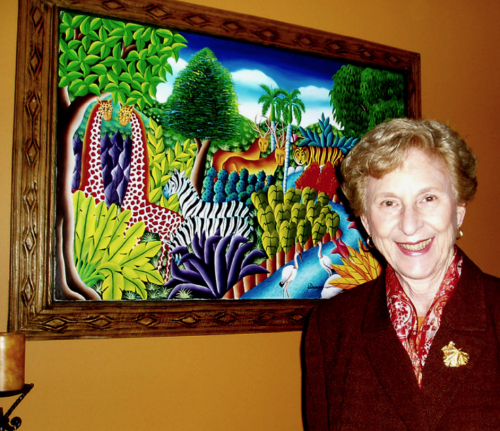 |
|
 |
|
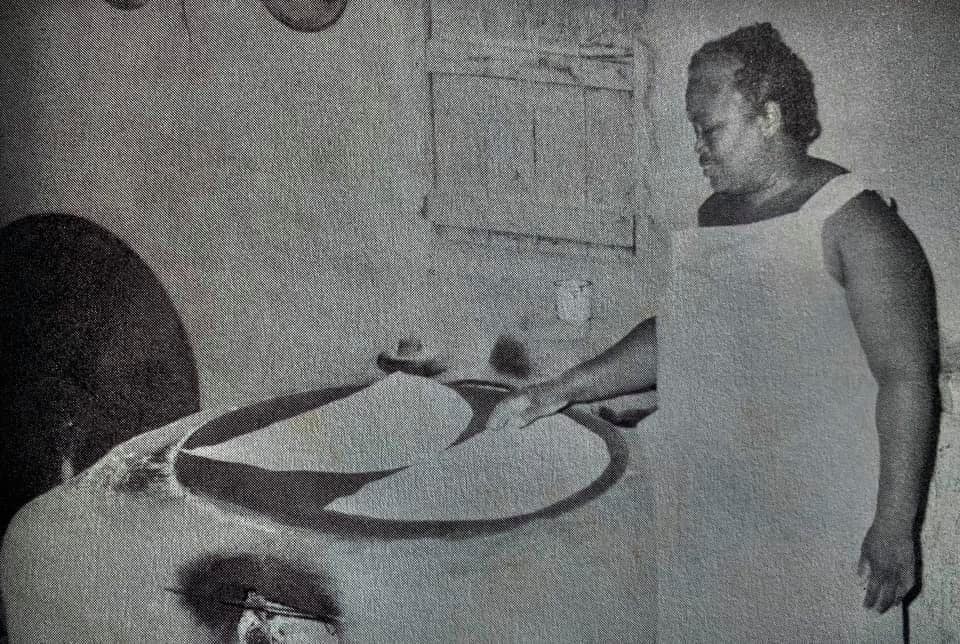 |
3 |
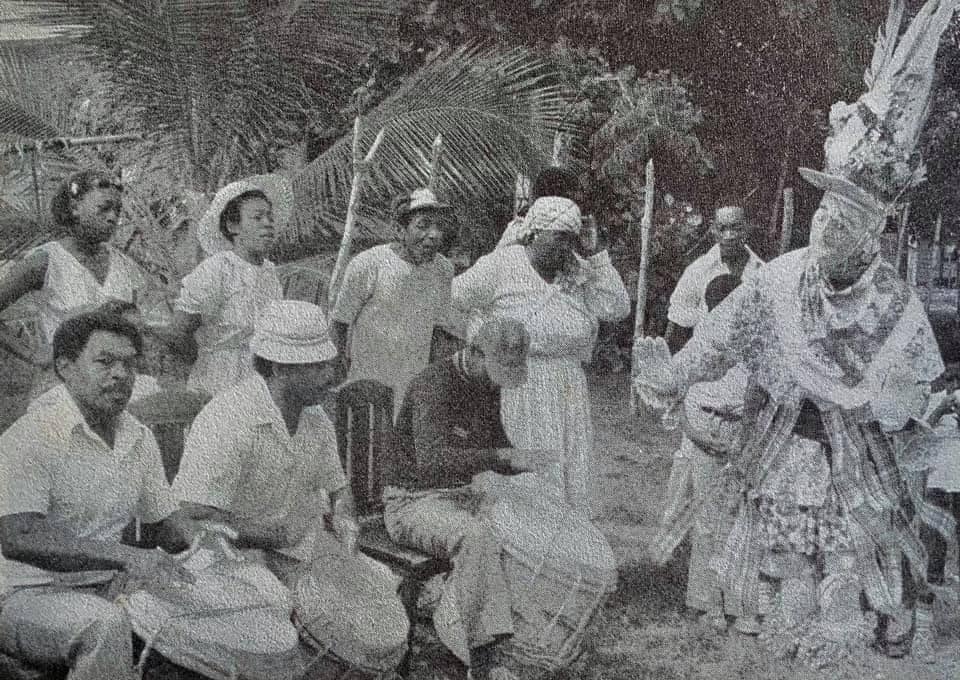 |
4 |
 |
5 |
 |
6 |
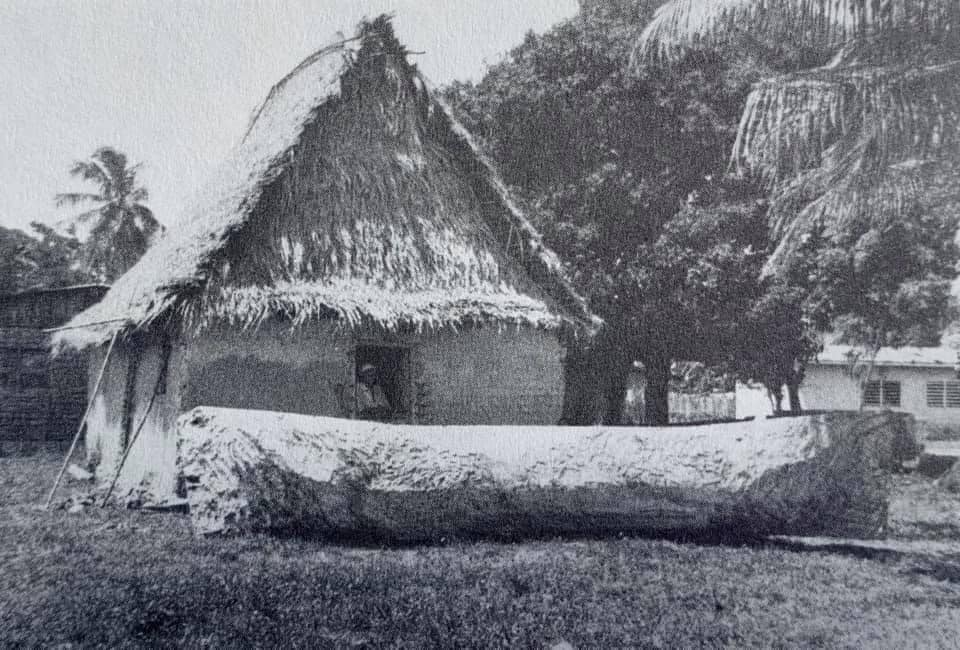 |
7 |
 |
8 |
 |
9 |
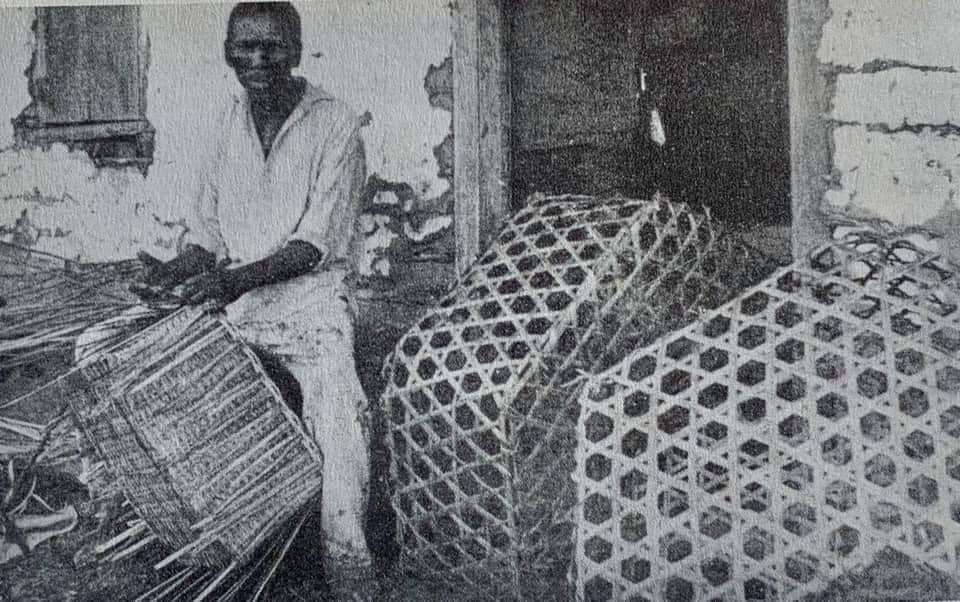 |
10 |
| https://anth.umd.edu/feature/honoring-memory-dr.-nancie-l.-gonzalez-%281929-2020%29 |
|
| 【カタロニア語】 La Dra. Nancie L. González nascuda l'any 1929, d'origen anglès i establerta als Estats Units, és una antropòloga especialitzada en l'estudi de la cultura i la vida en general del poble garífuna. Entre setembre de 1957 i juliol de 1958 va escriure una monografia del Port de Livingston a Guatemala fruit de la tesi doctoral i a través d'una beca de la Fundació Henry L. i Grace Doherty i d'una beca accessòria concedida pel Departament d'Antropologia de la Universitat de Michigan, Estats Units. El seu estudi ressalta especialment en l'anàlisi de l'organització familiar i les relacions de parentiu.[1] És professora emèrita d'Antropologia a la Universitat de Maryland, College Park, en què igualment va desenvolupar el càrrec de Vicerectora d'Afers Acadèmics entre 1977 i 1981. Graduada a la Universitat de Michigan, va començar a realitzar els seus treballs amb els garífunes el 1955 i a partir d'aquí es va decidir a escriure diversos llibres i nombrosos articles científics sobre l'etnohistòria i altres aspectes culturals d'aquest poble. El seu interès pels garífunes la va animar a realitzar investigacions etnogràfiques en diverses zones de l'Amèrica Central i entre comunitats emigrades a la ciutat de Nova York. Va desenvolupar àmplies investigacions d'arxiu a Anglaterra, França, l'illa de Sant Vicent, Belize, Guatemala, Hondures, Nou Mèxic i escrits basats en documentació sobre els garífunes als Estats Units. La seva sensibilitat i implicació sobre el conjunt dels canvis i les modificacions que es produeixen en les característiques de l'etnicitat durant la seva evolució van ocasionar que no fos indiferent i estudiés altres pobles, com la immigració palestina a Hondures i, fins i tot, les comunitats agrícoles a la Xina i altres zones d'Àsia. Va escriure un llibre sobre els Palestins en el Marge Occidental i Amèrica Central. El seu ampli trajecte acadèmic es va aturar algunes vegades per llicències, per dedicar-se a treballar per a l'Institut de Nutrició de l'Amèrica Central i Panamà, Fundació Nacional per la Ciencia i Cos de Pau dels EUA. També va col·laborar com a consultora per a un gran nombre d'organitzacions governamentals i no governamentals. Igualment ha format part de les juntes directives de l'Associació Antropològica Americana, l'Associació Americana per a l'Avanç de les Ciències, la Societat d'Antropologia Econòmica, i la Societat d'Antropologia Aplicada. En l'actualitat viu a la zona del Capitoli.[2] |
【英訳】 Dr. Nancie L. González, born in 1929, of English origin and settled in the United States, is an anthropologist specializing in the study of the culture and life in general of the Garífuna people. Between September 1957 and July 1958 he wrote a monograph on the Port of Livingston in Guatemala, the result of his doctoral thesis and through a grant from the Henry L. and Grace Doherty Foundation and an accessory grant granted by the Department of Anthropology from the University of Michigan, United States. His study stands out especially in the analysis of family organization and kinship relationships.[1] She is Professor Emeritus of Anthropology at the University of Maryland, College Park, where she also held the position of Vice Chancellor for Academic Affairs between 1977 and 1981. A graduate of the University of Michigan, she began her work with the Garifuna in 1955 and from there he decided to write several books and numerous scientific articles on the ethnohistory and other cultural aspects of this people. Her interest in the Garífuna encouraged her to conduct ethnographic research in various areas of Central America and among immigrant communities in New York City. He developed extensive archival research in England, France, the island of St. Vincent, Belize, Guatemala, Honduras, New Mexico and writing based on documentation of the Garífuna in the United States. His sensitivity and involvement on the set of changes and modifications that occur in the characteristics of ethnicity during its evolution caused him not to be indifferent and to study other peoples, such as Palestinian immigration to Honduras and even agricultural communities in China and other areas of Asia. He wrote a book about the Palestinians in the West Bank and Central America. Her extensive academic journey was stopped a few times by licenses, to dedicate himself to work for the Nutrition Institute of Central America and Panama, the National Science Foundation and the US Peace Corps. She also worked as a consultant for a large number of governmental and non-governmental organizations. He has also been part of the boards of directors of the American Anthropological Association, the American Association for the Advancement of Science, the Society of Economic Anthropology, and the Society of Applied Anthropology. She currently lives in the Capitol area.[2] |
| Resum de l'obra Peregrinos del Caribe: etnogénesis y etnohistoria de los garífunas [(2008), 1988] En aquesta obra es realitza un estudi exhaustiu sobre els garífunes, més comunament coneguts com els caribes negres. En el llibre es rebat una primera versió oficial en la qual els caribes eren d'origen amerindi, per passar a demostrar que també provenen d'avantpassats esclaus africans. Es descriuen els moments històrics que van donar origen a les societats anomenades caribs illencs, caribes negres i garífunes. Igualment s'expliquen els trets culturals que per a ells han estat i segueixen sent els marcadors ètnics més significatius. També es tracten els processos i institucions que han adaptat i canviat la cultura carib-garífuna fins a la seva configuració actual. La informació d'aquest llibre contínua imperant, ja que no han aparegut dades que puguin modificar l'etnogènesi i l'etnohistòria de l'ètnia garífuna. Són més de deu anys de profunda investigació basada en fonts documentals de l'illa de Sant Vicent, Jamaica, Europa, Estats Units i Amèrica Central, i anteriorment per diversos anys d'observació participant i anàlisi etnogràfica a Hondures, Guatemala i Belize. Avui en dia els garífunes moderns conformen societats parcials dins de diversos països. Aquesta realitat, unida als canvis en el seu entorn, està ocasionant transformacions culturals d'efectes encara imprevisibles. No obstant això, com molt bé s'assenyala en el llibre, si se centren en la conservació cultural poden seguir mantenint-se units davant les amenaces de desintegració com a grup ètnic.[3] |
Summary of the work Pilgrims of the Caribbean: ethnogenesis and ethnohistory of the Garífuna [(2008), 1988] In this work, an exhaustive study is carried out on the Garífunes, more commonly known as the Black Caribs. The book refutes a first official version in which the Caribs were of Amerindian origin, to go on to demonstrate that they also come from African slave ancestors. The historical moments that gave rise to the societies called Island Caribs, Black Caribs and Garifunas are described. They also explain the cultural features that have been and continue to be the most significant ethnic markers for them. The processes and institutions that have adapted and changed the Carib-Garifuna culture to its current configuration are also discussed. The information in this book continues to prevail, since no data has appeared that could modify the ethnogenesis and ethnohistory of the Garífuna ethnic group. It is more than ten years of in-depth research based on documentary sources from the island of Saint Vincent, Jamaica, Europe, the United States and Central America, and previously by several years of participant observation and ethnographic analysis in Honduras, Guatemala and Belize. Today the modern Garífuna make up partial societies within several countries. This reality, together with the changes in its environment, is causing cultural transformations with effects still unforeseeable. However, as very well pointed out in the book, if they focus on cultural conservation they can continue to stay united in the face of threats of disintegration as an ethnic group.[3] |
| 1967 - The Spanish-Americans of New Mexico; a heritage of pride. 1969 - Black Carib household structure; a study of migrations and modernization. 1979 - La estructura del grupo familiar entre los caribes negros. 1991 - Próspero, Calibán, and Black Sambo: colonial views of the other in the Caribbean. 1992 - Dollar, dove, and eagle: one hundred years of Palestinian migration to Honduras. 1997 - La historia del grupo Garífuna: pasado y presente. 2008 - Peregrinos del Caribe: etnogénesis y etnohistoria de los garífunas. Articles 1958 - The consanguinial household among the black Carib of Central America. University of Michigan. Tesis/disertación: Tesis de maestría/doctorado: Manuscrito. Material de archivo. 1960 - Changes in black Carib Kinchip Terminology Southwestern Journal of Anthropology. Vol. 16, No. 2 University of New Mexico, Alburquerque. 1961 - Family Organization in five Types of Migratory Wage Labor. AA 63 (6):12 pp.64-90. 1966 - Health behavior in a cross-cultural perspective: a Guatemalan example.Human organization. Vol. 25: 125-126. 1969 - Study of migration and Modernization. (American Ethnological Society, Monograph No. 48). Seattle: University of Washington Press. 1970 - Two views of Obeah and witchcraft. Obeah and other witchcraft among the Black Caribs. Systems of North American wichcract and sorcery. Edited by Deward D. Walker, Jr Anthropological Monographs of University of Idaho, N. 1. 1970 - Cakchiqueles and Caribs: the social context of fieldwork. Publicación: Marginal natives, pp. pp.153-184. 1986 - Garifuna traditions in historial perspectives. Belizean Studies. Vol. 14, No. 2. 1986 - Nuevas evidencias sobre el origen de los Caribes Negros con consideraciones sobre el significado de la tradición. Revista Mesoamérica No. 12. CIRMA. Guatemala. |
著作 1967年 - ニューメキシコのスペイン系アメリカ人:誇り高き遺産。 1969年 - 黒人カリブ人の世帯構造:移住と近代化に関する研究。 1979年 - カリブ系黒人の家族構造。 1991年 - プロスペロ、カリバン、そしてブラック・サンボ:カリブにおける他者に対する植民地主義者の見方。 1992年 - ドル、ハト、そしてワシ:ホンジュラスへのパレスチナ人の移民100年。 1997年 - ガリフナ族の歴史:過去と現在。 2008年 - カリブの巡礼者:ガリフナ族の民族生成と民族史。 論文 1958年 - 中米の黒カリブ族における血族婚の家庭。ミシガン大学。論文/学位論文:修士論文/博士論文:原稿。アーカイブ資料。 1960年 - 黒カリブ族親族の用語の変化。南西部人類学ジャーナル。第16巻、第2号。ニューメキシコ大学、アルバカーキ。 1961年 - 5つのタイプの季節労働における家族組織。AA 63 (6):12 pp.64-90. 1966年 - 異文化における健康行動:グアテマラの例。Human organization. Vol. 25: 125-126. 1969年 - 移住と近代化に関する研究。(アメリカ民族学会、モノグラフ第48号)。シアトル:ワシントン大学出版。 1970年 - オベアと魔術に関する2つの見解。黒人カリブ族におけるオベアとその他の魔術。北米の魔術と妖術の体系。デウォード・D・ウォーカー・ジュニア編。アイダホ大学人類学モノグラフ、第1号。 1970年 - Cakchiquelesとカリブ族:フィールドワークの社会的背景。出版物:周縁の原住民、pp. pp.153-184。 1986年 - 歴史的観点におけるガリフナの伝統。ベリーズ研究。第14巻、第2号。 1986年 - 黒人カリブ人の起源に関する新たな証拠と伝統の意義についての考察。メソアメリカ研究誌第12号。CIRMA。グアテマラ。 |
| https://ca.wikipedia.org/wiki/Nancie_L._Gonz%C3%A1lez |
リ ンク
文 献
そ の他の情報
Copyleft, CC, Mitzub'ixi Quq Chi'j, 1996-2099
☆
 ☆
☆